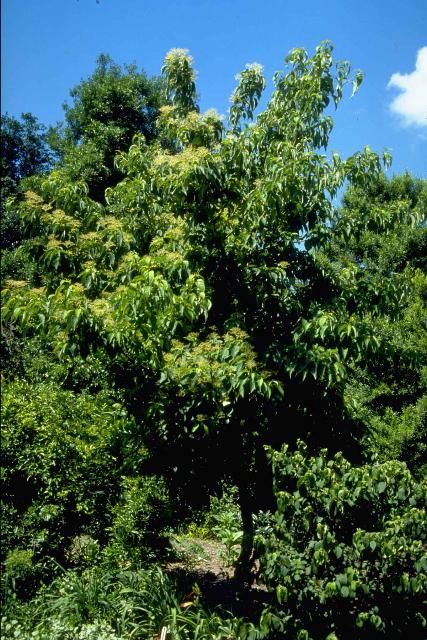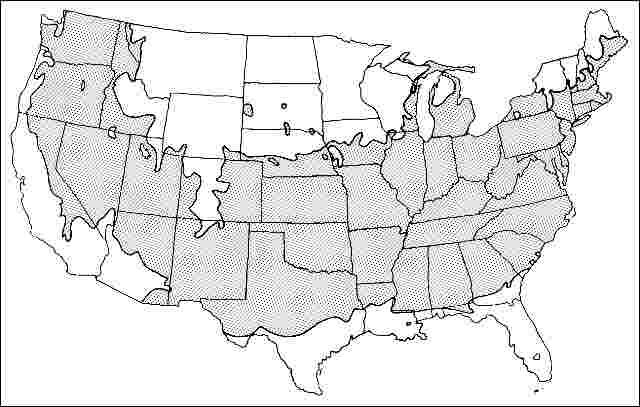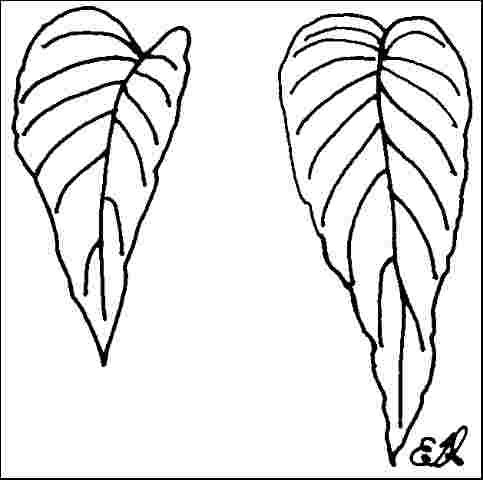Introduction
Walter Dogwood is a medium-sized deciduous tree reaching 30 to 40 feet in height and width. The two to five-inch-long leaves are dark green and are joined in June by the small white flowers arranged in two to three-inch diameter cymes. The blossoms are followed by the production of small black fruits which are popular with birds and other wildlife. Walter Dogwood is probably best known for the alligator-like bark on older specimens, even more so than Flowering Dogwood. Young specimens have an upright branching habit giving way to an open spreading habit. The branches probably droop less than most other Dogwoods, making it a possible candidate for street tree use although they have not been tested for this in the United States. Most certainly a good patio tree providing shade quickly.

Credit: Ed Gilman
General Information
Scientific name: Cornus walteri
Pronunciation: KOR-nus WALL-ter-eye
Common name(s): Walter Dogwood
Family: Cornaceae
USDA hardiness zones: 5A through 8A (Fig. 2)
Origin: not native to North America
Invasive potential: little invasive potential
Uses: shade; street without sidewalk; deck or patio
Availability: not native to North America

Description
Height: 30 to 40 feet
Spread: 30 to 40 feet
Crown uniformity: symmetrical
Crown shape: vase
Crown density: moderate
Growth rate: fast
Texture: medium
Foliage
Leaf arrangement: opposite/subopposite (Fig. 3)
Leaf type: simple
Leaf margin: serrate, serrulate
Leaf shape: ovate
Leaf venation: pinnate
Leaf type and persistence: deciduous
Leaf blade length: 2 to 4 inches, 4 to 8 inches
Leaf color: green
Fall color: red
Fall characteristic: showy

Flower
Flower color: white/cream/gray
Flower characteristics: showy
Fruit
Fruit shape: round
Fruit length: less than .5 inch
Fruit covering: fleshy
Fruit color: black
Fruit characteristics: attracts birds; not showy; fruit/leaves not a litter problem
Trunk and Branches
Trunk/bark/branches: branches don't droop; showy; typically one trunk; thorns
Pruning requirement: little required
Breakage: resistant
Current year twig color: green
Current year twig thickness: medium
Wood specific gravity: unknown
Culture
Light requirement: full sun, partial sun or partial shade
Soil tolerances: clay; sand; loam; acidic; slightly alkaline; well-drained
Drought tolerance: high
Aerosol salt tolerance: unknown
Other
Roots: not a problem
Winter interest: no
Outstanding tree: no
Ozone sensitivity: unknown
Verticillium wilt susceptibility: resistant
Pest resistance: resistant to pests/diseases
Use and Management
Grown in the full sun it develops a dense canopy but is more open and perhaps more attractive in partial shade. The plant is now rare in the industry but deserves to be tried. It is highly drought tolerant and grows well in clay soil.
Propagation is by cuttings or seed.
Pests
No pests are of major concern at this time.
Diseases
Possibly leaf spot, twig blight, or canker. See diseases section of Flowering Dogwood.
